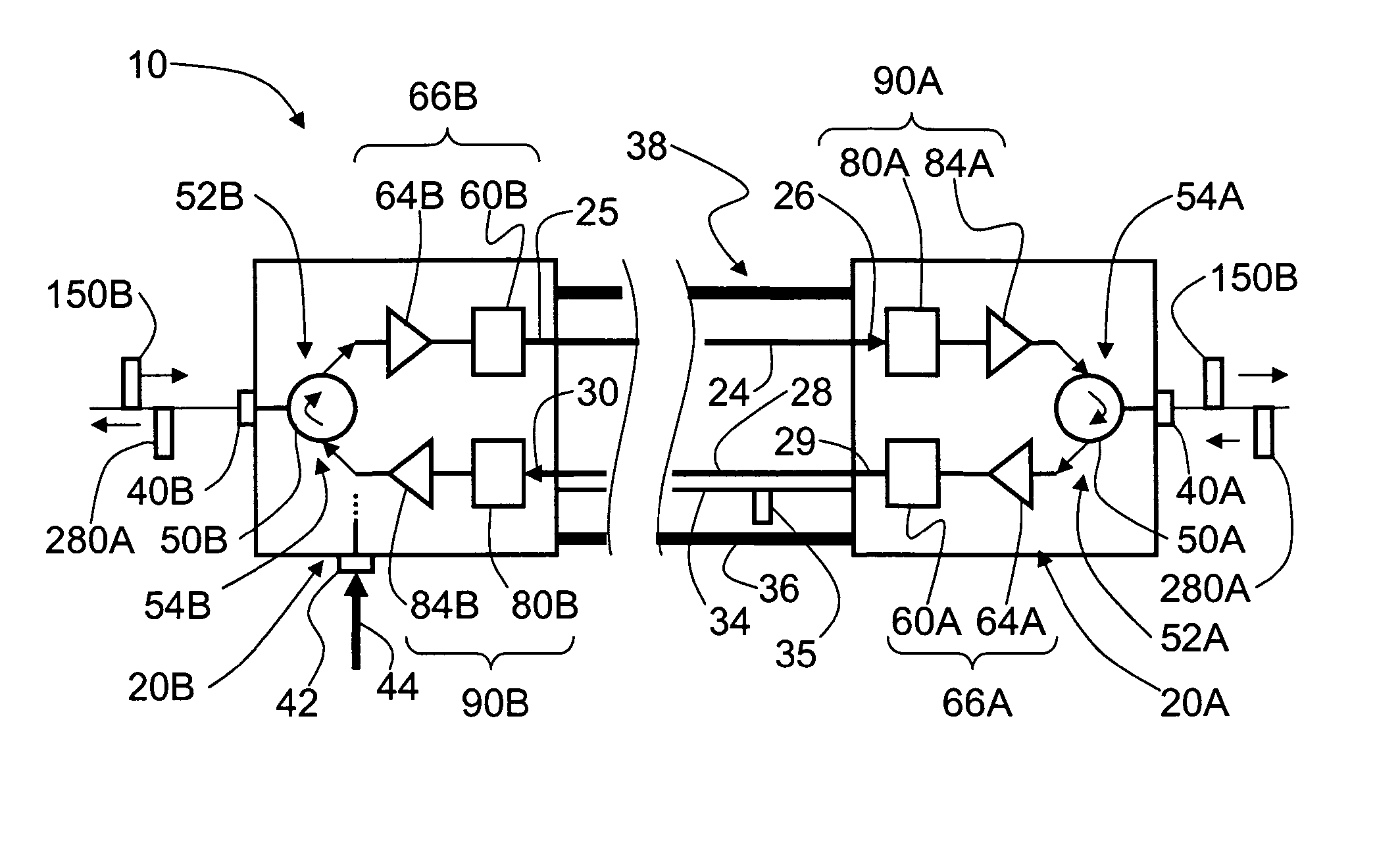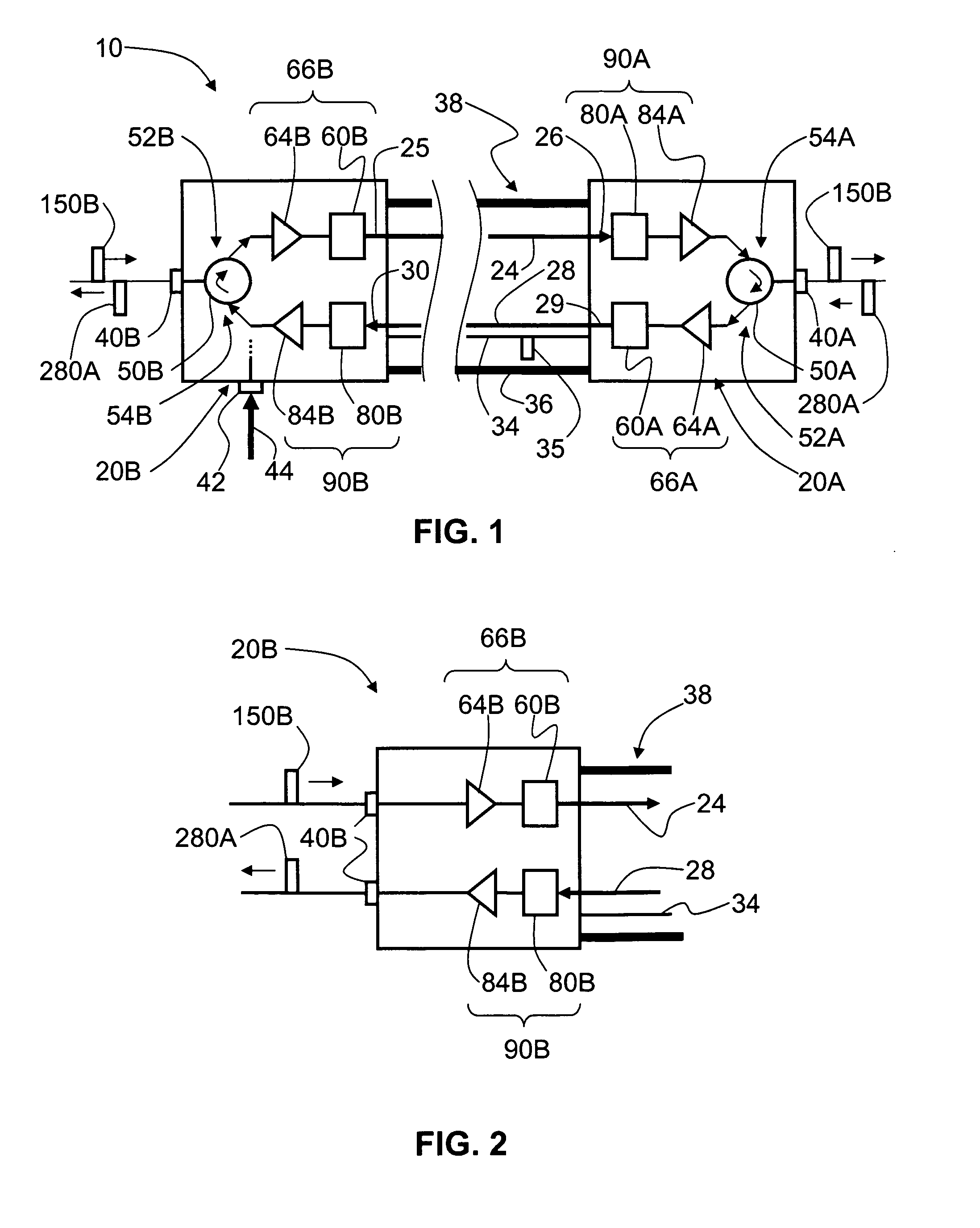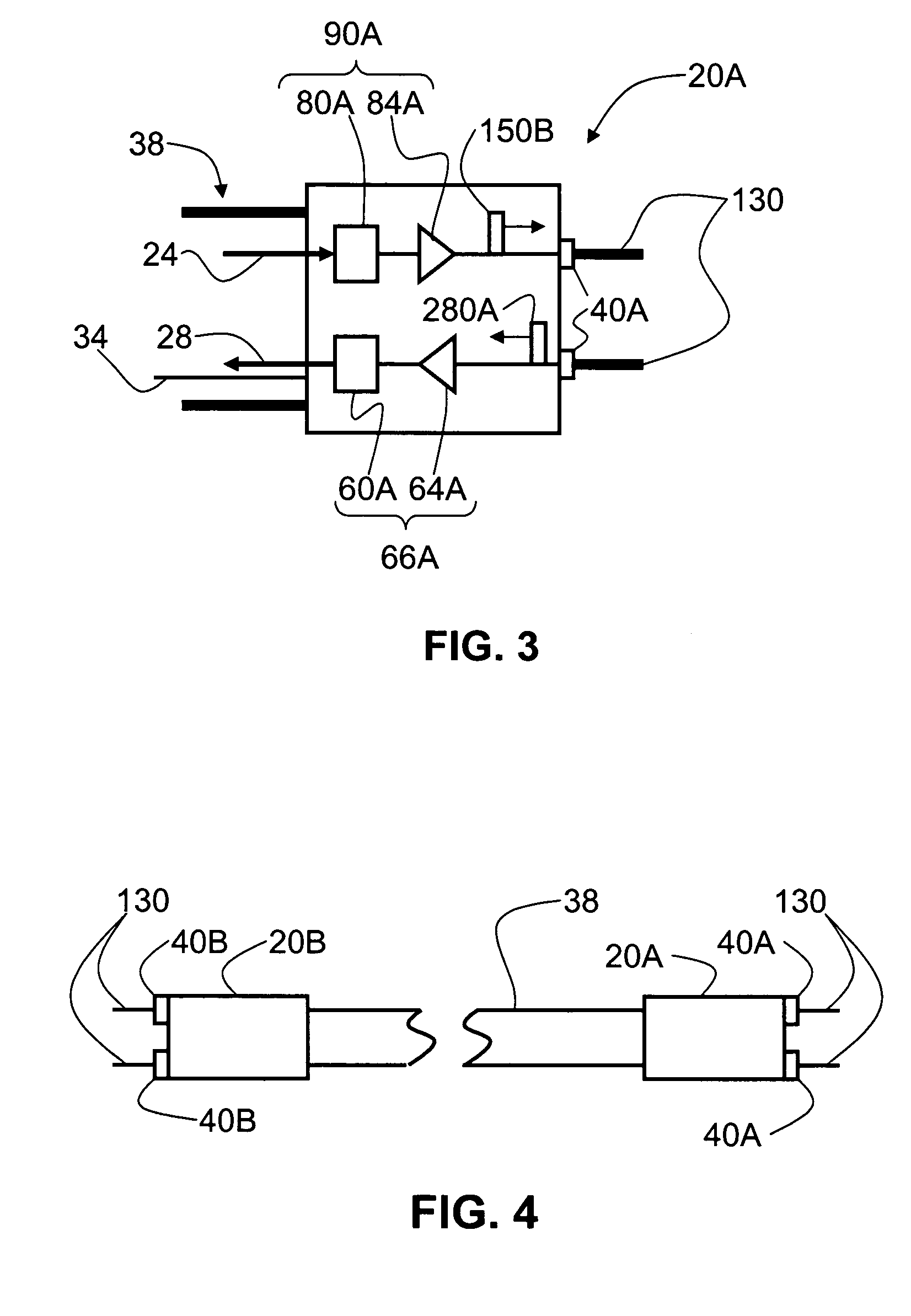Electrical-optical cable for wireless systems
a wireless system and optical cable technology, applied in the field of wireless communication systems, can solve the problems of inconvenient use of coax cables, and inconvenient installation of coax cables
- Summary
- Abstract
- Description
- Claims
- Application Information
AI Technical Summary
Benefits of technology
Problems solved by technology
Method used
Image
Examples
example method
of Operation
[0038]FIG. 5 is a schematic diagram of an example WiFi system 100 that includes an example embodiment of cable 10 of the present invention. Cable 10 is used in WiFi system 100 as a transparent ˜0 dB loss cable for operably connecting a remote antenna to a WiFi access point device. WiFi system 100 includes an RF electrical signal source 110, which in an example embodiment is an access point device or a WiFi box. RF electrical signal source 110 includes a connector 112, which is connected to connector 40B of E / O converter unit 20B of cable 10. RF electrical signal source 110 includes an electrical power cord 116 that plugs into a conventional electrical outlet 120 or other power supply. WiFi system 100 also includes a power supply 92 electrically coupled to E / O converter unit via input electrical power line 44, and is plugged into electrical outlet 120 via an electrical power cord 122. In an example embodiment, RF electrical signal source 110 is plugged into power supply 9...
example frequency
Ranges
[0053] In an example embodiment, the RF frequency range of the present invention falls between 2.4 GHz and 5.2 GHz, which covers both ISM frequency bands used in WiFi systems. These frequencies are readily obtainable with commercially available high-speed lasers, transmitters and photoreceivers. In another example embodiment, the frequency range of the present invention falls between 800 MHz and up to (a) 2.4 GHz; or (b) 5.2 GHz; or (c) 5.8 GHz. In an example embodiment, the frequency range is selected to include cellular phone services, and / or radio-frequency identification (RFID). In another example embodiment, the frequency range of the present invention covers only a narrow band of ˜200 MHz around 2.4 GHz or around a frequency between about 5.2 and about 5.8 GHz.
[0054] The main source of loss in cable 10 is due to the electrical-optical-electrical conversion process. In an example embodiment, this conversion loss is compensated for by amplifying the RF signals within the ...
PUM
 Login to View More
Login to View More Abstract
Description
Claims
Application Information
 Login to View More
Login to View More - R&D
- Intellectual Property
- Life Sciences
- Materials
- Tech Scout
- Unparalleled Data Quality
- Higher Quality Content
- 60% Fewer Hallucinations
Browse by: Latest US Patents, China's latest patents, Technical Efficacy Thesaurus, Application Domain, Technology Topic, Popular Technical Reports.
© 2025 PatSnap. All rights reserved.Legal|Privacy policy|Modern Slavery Act Transparency Statement|Sitemap|About US| Contact US: help@patsnap.com



